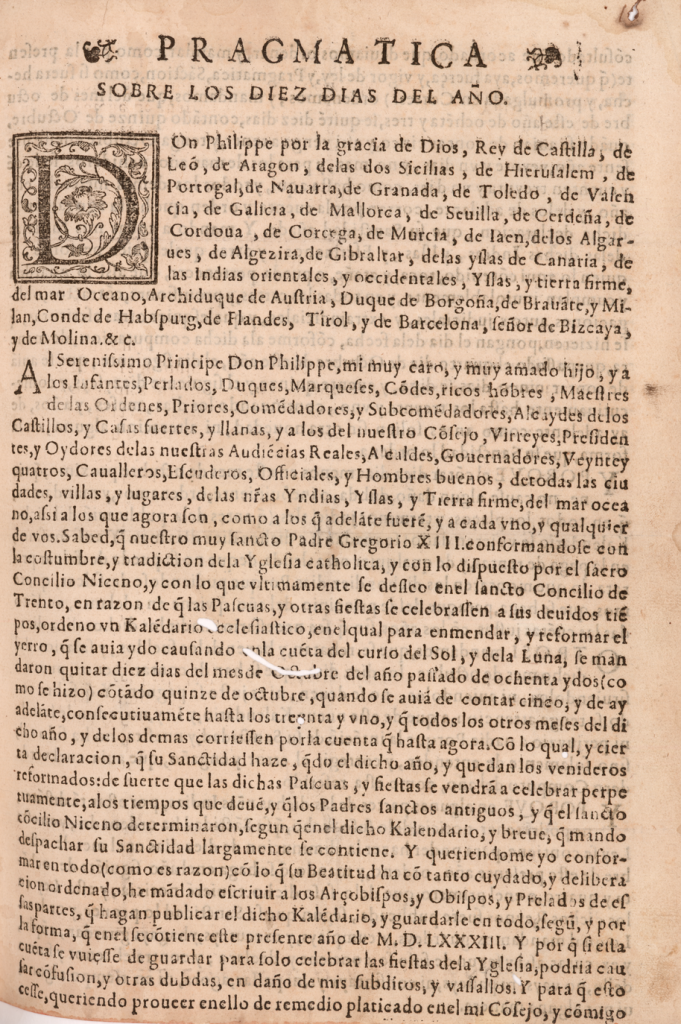
Libraries
Libraries
Pragmática de los diez días del año
The Catholic Church pushed for the creation of a more accurate calendar to correct the time lag of the Julian calendar: some religious feasts were celebrated at inappropriate times of the year. Pope Gregory XIII (1572-1585) established a scientific commission that included the Italian chronologist Louis Lilio, the Jesuit Christophorus Clavius, the cosmographer Ignazio Danti and the Spanish mathematician Pedro Chacón. On 24 February 1582 Gregory XIII promulgated the entry into force of the calendar by means of the bull Inter Gravissimas: ten days “disappeared” for the territories that adopted the calendar. Spain and Portugal implemented the reform on the same day as Rome, 4 October 1582. Thus, the night of 4 October 1582 gave way to 15 October with the introduction of the Gregorian calendar.
The adoption of the new calendar was neither universal nor immediate, and the New World was no exception. On 14 May 1583 King Philip issued a decree ordering the change of calendar in Spanish America for October 1583. However, the Pragmática was printed in Peru, in the presses of Antonio Ricardo, in 1584. A copy of this Lima print is in the John Carter Brown Library and it was George Parker Winship, its first librarian, who discovered that the Pragmatica was the first work printed in South America. According to Monica Barnes, the copy in that library has a handwritten note stating that “the orders were received in Huarochirí on 17 August 1584” and the copy in the Houghton Library at Harvard University bears an apostille stating that “it was announced by the town crier in the coastal town of Cañete on 27 September 1584”.

